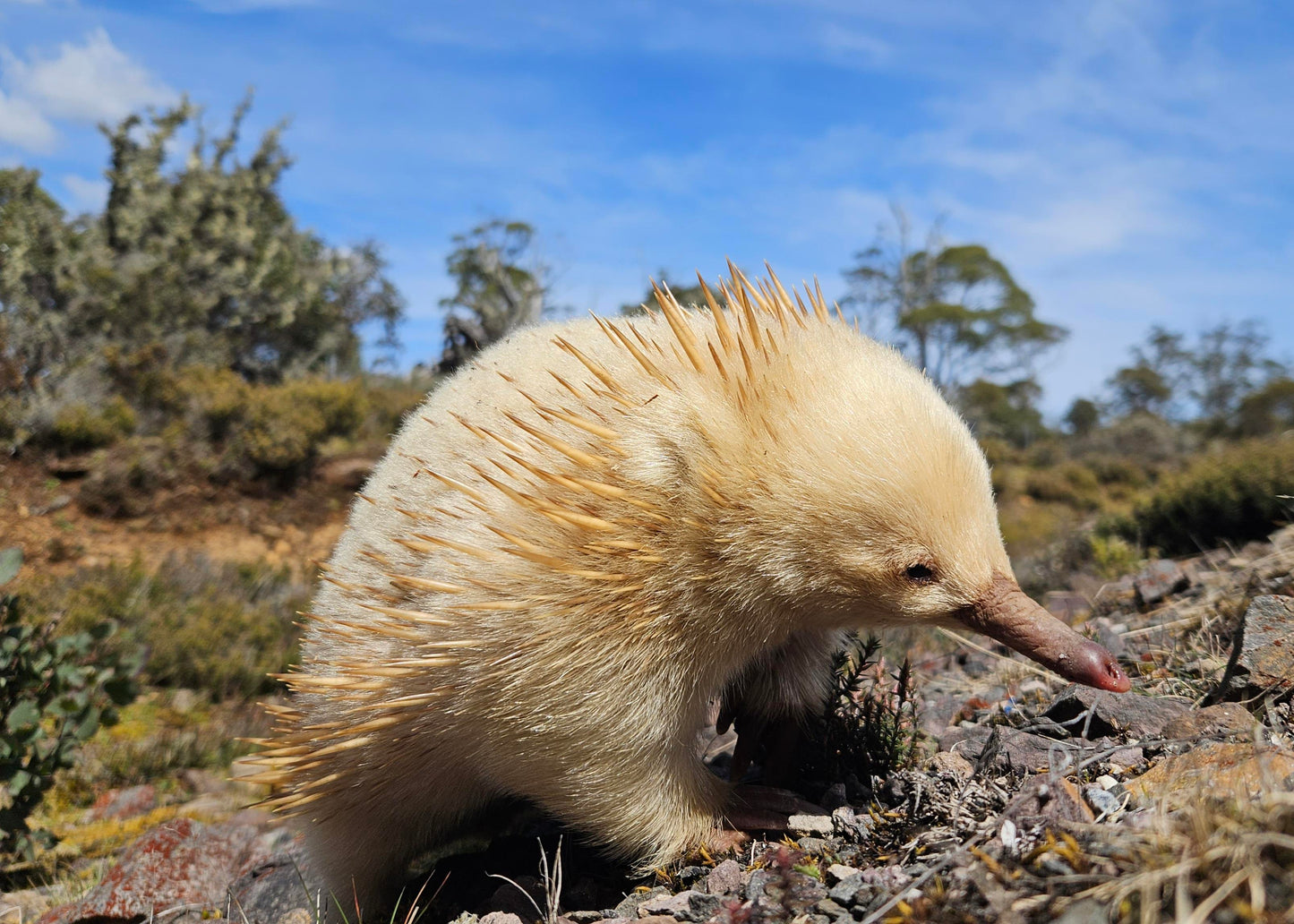Offer
Provide additional details about the offer you're running.

My favourite animal you may get to see while traveling in Tasmania is the Short Nosed Echidna. At both Bonorong and East Coast wildlife parks you can see these lovely creatures during their daily feeding. The Tasmanian Short Beaked Echidna is smaller and furrier than other Echidnas and is only found in Tasmania. In the warmer months of Summer & Autumn we are often lucky enough to spot these fellows in the wild.
This photo is of an incredibly rare White Echidna that we spotted in the wild recently on our tour just near Cradle Mountain. At Fun Tassie Tours we are always looking for unique experiences on the run and this was too good an opportunity to miss! He was foraging for food off the side of the HWY. I have never before seen a white Echidna in all my travels of Tasmania, nor have I met another person who has - so this was a real treat. The black eyes suggest this animal is probably not an albino although we cannot be completely sure. More likely just some kind of genetic change leading to its striking white colour!
Apart from being one of the cutest looking creatures on earth, the Echidna has some amazing and interesting adaptations that have allowed it to survive for thousands of years. The most obvious and well known adaptation is its defensive spines. When threatened the animal will curl into a ball and wait for the predator to give up and leave. It has a tongue up top 17cm long that it uses to catch termites by moving in and out up to 100 times per minutes. The tongue is sticky and can be stiffened, enabling it to penetrate wood and soil and has an ability to avoid getting splinters while foraging in logs - factors behind this remarkable ability are still unknown by science.
One of the more important abilities the Echidna possesses is to enter states of torpor when needed. During winter hibernation body temperatures can fall to as low as 4 degrees. During these periods an Echidna will breathe only once every 3 minutes and slow the heart rate from a usual 50-60 beats to just 4-9 per minute. They are also able to live in low oxygen, high carbon dioxide environments when digging or living underground.
Echidnas have no sweat glands and seek shelter underground in hot conditions. The snout has a bony labyrinth that has a refrigerator effect and helps to trap water from being expelled. Eating copious amounts of termites, mostly made of water, and licking the morning dew from plants allow the Echidna to maintain hydration. Surprisingly, the Echidna is also a good swimmer and will use its snout like a snorkel.
Mating is a fascinating dance between the female and male suiters. Up to 10 males will follow the female, foraging and resting together for as long as 4 weeks until only one remains or the female eventually chooses to mate. The female will only mate once during the breeding season and will produce only one egg laid directly into its pouch. When it hatches the baby Echidna - called a Puggle - feeds on its mothers milk and will be kicked out at around 3 months because of its rapidly developing spines.
After 6 months the new Echidna is left to look after itself. They can roam and forage over as much as 190ha. They generally live for around 10 years but in captivity can reach as much as 50. The amazing and endearing Tasmanian Short Beaked Echidna is one of our endemic species and is well worth the effort of trying to see while also supporting the volunteer based wildlife parks in Tasmania.